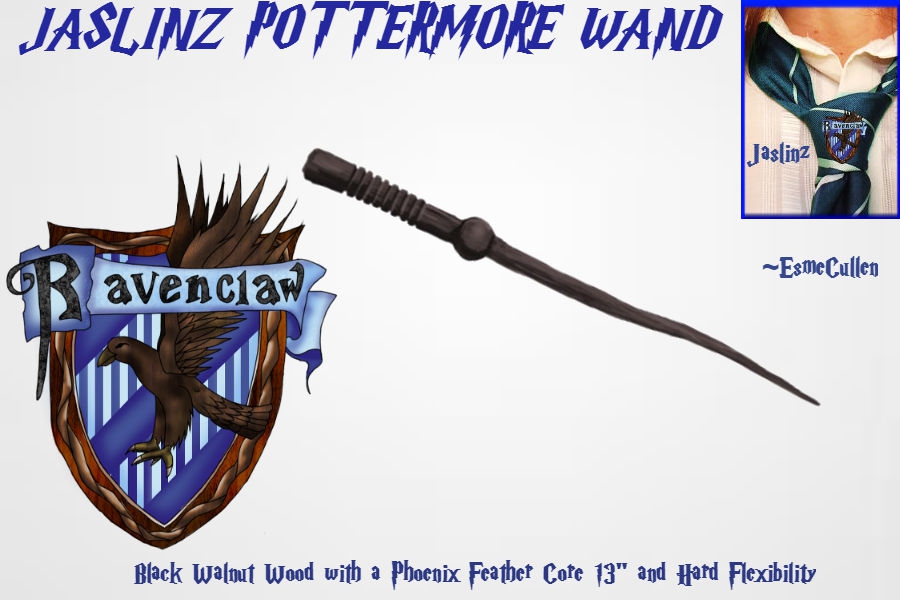Inspired by the Harry Potter Series/Novels and Pottermore


Black Walnut Wood- Less common than the standard walnut wand, that of black walnut seeks a master of good instincts and powerful insight. Black walnut is a very handsome wood, but not the easiest to master. It has one pronounced quirk, which is that it is abnormally attuned to inner conflict, and loses power dramatically if its possessor practices any form of self-deception. If the witch or wizard is unable or unwilling to be honest with themselves or others, the wand often fails to perform adequately and must be matched with a new owner if it is to regain its former prowess. Paired with a sincere, self-aware owner, however, it becomes one of the most loyal and impressive wands of all, with a particular flair in all kinds of charmwork.
Phoenix Feather- This is the rarest core type. Phoenix feathers are capable of the greatest range of magic, though they may take longer than either unicorn or dragon cores to reveal this. They show the most initiative, sometimes acting of their own accord, a quality that many witches and wizards dislike. Phoenix feather wands are always the pickiest when it comes to potential owners, for the creature from which they are taken is one of the most independent and detached in the world. These wands are the hardest to tame and to personalize, and their allegiance is usually hard won.
13" (inches)- "Most wands will be in the range of between nine and fourteen inches. While I have sold extremely short wands (eight inches and under) and very long wands (over fifteen inches), these are exceptionally rare. In the latter case, a physical peculiarity demanded the excessive wand length. However, abnormally short wands usually select those in whose character something is lacking, rather than because they are physically undersized (many small witches and wizards are chosen by longer wands)." -Garrick Ollivander, wandmaker.
Hard Flexibility- "Wand flexibility or rigidity denotes the degree of adaptability and willingness to change possessed by the wand-and-owner pair - although, again, this factor ought not to be considered separately from the wand wood, core and length, nor of the owner's life experience and style of magic, all of which will combine to make the wand in question unique." -Garrick Ollivander, wandmaker
